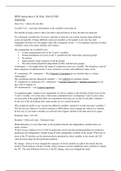Samenvatting
Summary SPSS instructions Causal Analysis Techniques (760435-B-4)
- Instelling
- Tilburg University (UVT)
SPSS instructions based on the practice excersices from the tutorials. A full list of steps that you need to be able to perform in order to run several tests in SPSS.
[Meer zien]




